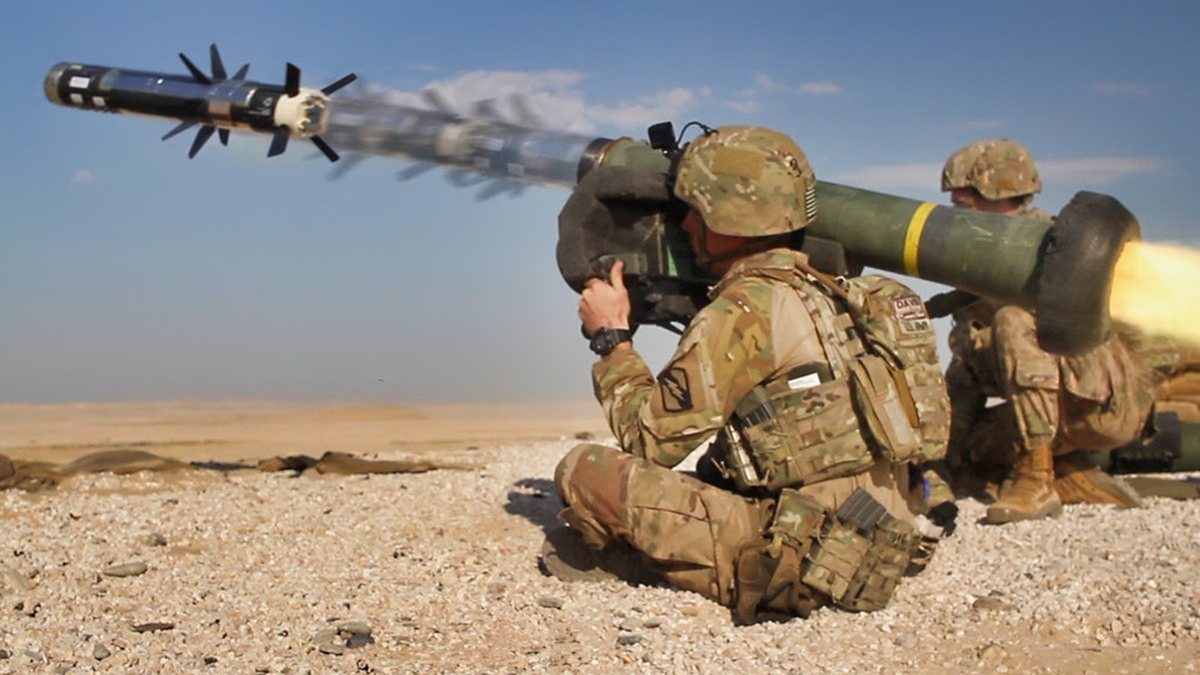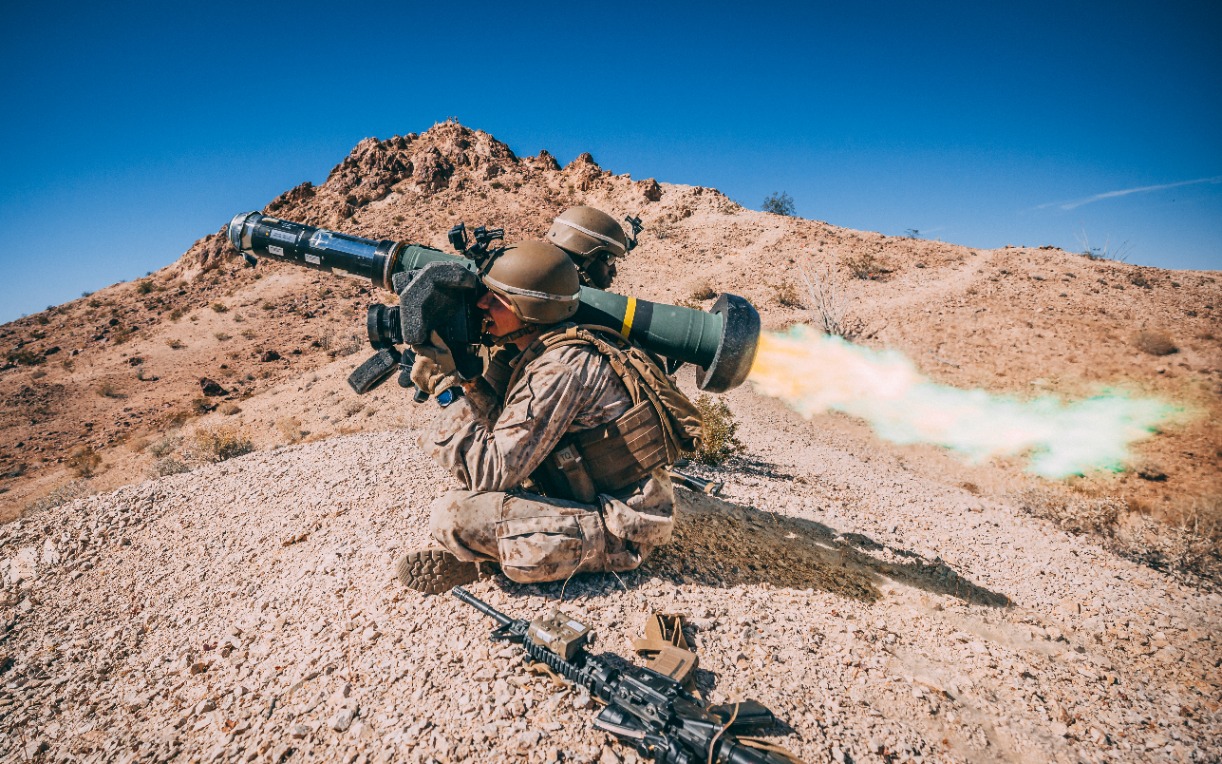89 Percent Hit Rate: Javelin Tank Killer is Causing Mayhem in Ukraine
Just how deadly effective were Ukrainian-wielded Javelins against Russian armor in the early stages of the war in 2022? The Pentagon reported that out of the first 112 such missiles fired in 2022, 89.2 percent struck their targets.
What You Need to Know: The FGM-148F Javelin anti-tank missile has proven its combat prowess in Ukraine, with an accuracy rate of 89% in the early stages of the conflict.

-Originally designed by Texas Instruments and Martin Marietta, the Javelin entered service in 1996 and features a deadly tandem warhead system capable of piercing reactive and main armor.
-It has been effective in conflicts from Iraq to Ukraine, where it has contributed to significant Russian tank losses.
-With international interest surging, NATO allies like Bulgaria, Poland, and Lithuania are placing large orders, ensuring the Javelin remains a key weapon system in arsenals worldwide until 2050.
Javelin Missile: The Anti-Tank Weapon Devastating Russian Armor in Ukraine
As is the case with many other weapons systems and tactics of antiquity, it should come as no surprise that the Javelin should end up as the namesake of a very powerful modern-day weapons system that has a literally explosive effect. The National Interest now takes a closer look at the FGM-148F Javelin anti-tank missile system, and how it’s been proven deadly effective in Ukraine.
Javelin Initial History and Specifications
The FGM-148 Javelin, or Advanced Anti-Tank Weapon System-Medium (AAWS-M), was originally designed by Texas Instruments and Martin Marietta, and is now built as a joint venture between Lockheed Martin and Raytheon. Initially designed in June 1989 as a replacement for the M47 Dragon antitank guided missile (ATGM), the weapon first entered into official operational service with the U.S. Army in 1996 (the 50,000th delivery was celebrated in 2021, conveniently coinciding with the weapon’s silver service anniversary).

Specifications and vital stats of the Javelin (courtesy of my colleague Maya Carlin) include:
Length: 1.2 meters (3.93 feet)
Weight: 22.1 kilograms (47.7 pounds)
Velocity: 1,000 feet (304.8 meters) every seven seconds
Armor Penetration Capability: 23.5 to 31.5 inches (29.69 to 80.01 centimeters)
Training Time for Proficiency: 72 hours (contrast this with 10 days for the M47 Dragon)
Effective Range: Over 1.5 miles (2.41 kilometers)
Interestingly enough, Ukraine’s first purchases of the Javelin—thirty-seven launchers and 210 missiles—actually took place in 2018, i.e., four years before Vladimir Putin’s full-scale invasion of Ukraine but four years after his annexation of Crimea.
Operational History/Combat Performance
The Javelin was first “blooded” in combat during the Iraq War in 2003. Since then, the weapon saw combat in the Afghanistan war, the Syrian civil war, and the second Libyan civil war. In Iraq and Afghanistan alone, the missile was used for over 5,000 engagements! Most recently (and most significantly for our current discussion purposes), the Russia-Ukraine war (or as Putin and his cronies still prefer to euphemistically call it, the “special military operation” in Ukraine).
Just how deadly effective were Ukrainian-wielded Javelins against Russian armor in the early stages of the war in 2022? Well, back in May of that year, the Pentagon reported that out of the first 112 such missiles fired, 100 struck their targets, which equates to an accuracy rate of 89.2 percent!
Fast-forward to February 2023, and Carlin cited a Wall Street Journal report that estimated that “Russia might have lost 50% of modern tanks such as the T-72B3 and T-72B3M and that its inventory of T-80BV/U tanks has been depleted by two-thirds.” Granted, these weren’t entirely the work of the Javelin, but certainly, the FGM-148 exacted a large chunk of that proverbial butcher’s bill.
Carlin explains what makes the weapon so deadly effective: “The first of two high-explosive warheads explodes against the reactive armor, enabling the second warhead to reach the target’s main armor.”
The Way Forward?
The Javelin doesn’t seem to be going away anytime soon. Raytheon proudly states, “The system is scheduled to be in inventory until 2050.”
Indeed, Bulgaria, a former Eastern Bloc/Warsaw Pact nation that has become a member of NATO, has just placed a big order for the missile. To be more specific, this past September, my colleague Peter Suciu reported for The National Interest that Sofia placed an order for 218 of the launchers—107 Javelin Lightweight Command Launch Units (LWCLU) —in a deal worth $114 million (equivalent to 209.82 million Bulgarian leva).
Other current foreign military sales (FMS) customers in the region include the Czech Republic (AKA Czechia), Estonia and Lithuania (both former Soviet Republics), and Poland—whilst Latvia and Romania are both in the proverbial queue to make purchases.
I imagine these sales wouldn’t be proceeding so briskly if the Javelin weren’t continuing to get the job done for the Ukrainians.
About the Author:
Christian D. Orr is a Senior Defense Editor for National Security Journal (NSJ). He is a former Air Force Security Forces officer, Federal law enforcement officer, and private military contractor (with assignments worked in Iraq, the United Arab Emirates, Kosovo, Japan, Germany, and the Pentagon). Chris holds a B.A. in International Relations from the University of Southern California (USC) and an M.A. in Intelligence Studies (concentration in Terrorism Studies) from American Military University (AMU). He has also been published in The Daily Torch , The Journal of Intelligence and Cyber Security, and Simple Flying. Last but not least, he is a Companion of the Order of the Naval Order of the United States (NOUS).
Image Credit: Creative Commons and/or Shutterstock.


